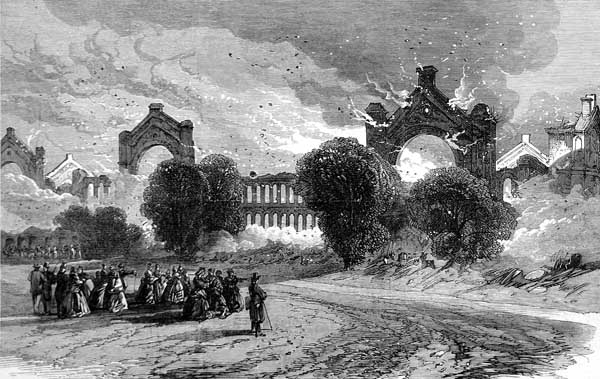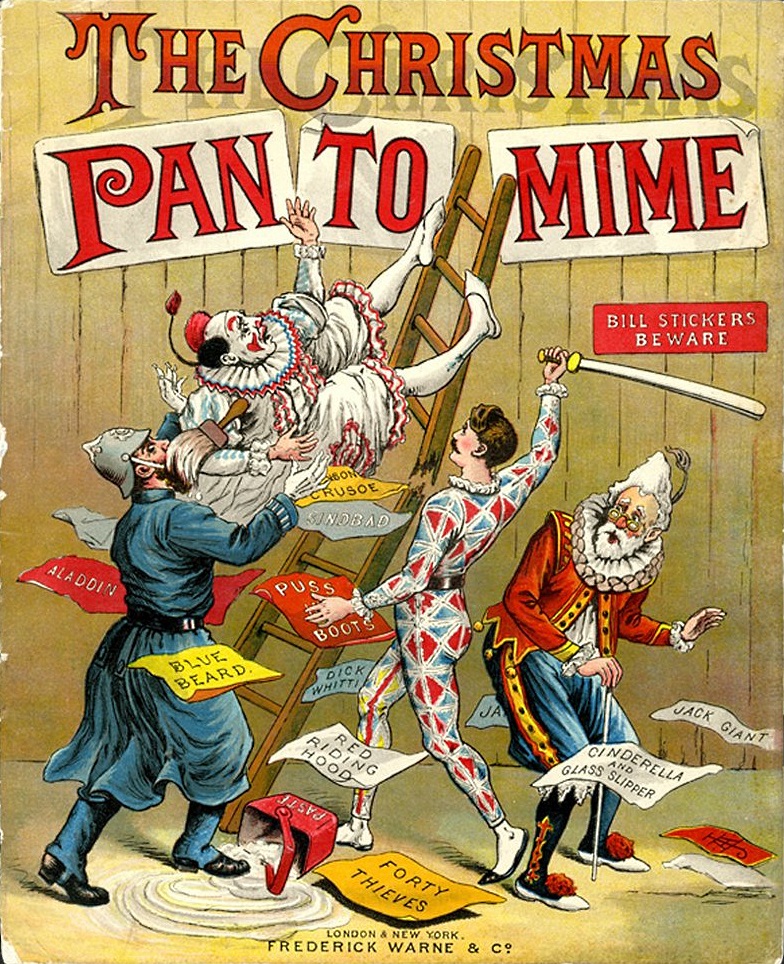|
Pegaret Anthony
Pegaret Anthony née Keeling (1 November 1915 – 25 May 2000) was an English artist and lecturer in Historical Costume and Theatre History, best known for her watercolour paintings of war workers during the Second World War. Early years Pegaret Keeling was born on 1 November 1915 in Totnes, Devon, the daughter of Jessie ( ''née'' Howes) and Guy William Keeling. Her maternal grandfather was the Victorian artist Thomas Howes. She was educated at The King Alfred School in Hampstead, and King's College of Household and Social Science at the University of London. As an 18-year-old student she travelled alone to Montreal in Canada, arriving back in London on 26 August 1934. From 1934 to 1938 she was a student at the Central School of Art and Design, where she studied under Jeanetta Cochrane, a theatre practitioner specialising in costume and scenic design. In her final year there she was a holder of the William Atkinson Scholarship for theatrical design. Career During the 1930 ... [...More Info...] [...Related Items...] OR: [Wikipedia] [Google] [Baidu] |
Totnes
Totnes ( or ) is a market town and civil parishes in England, civil parish at the head of the estuary of the River Dart in Devon, England, within the South Devon Area of Outstanding Natural Beauty. It is about west of Paignton, about west-southwest of Torquay and about east-northeast of Plymouth. It is the administrative centre of the South Hams District Council. Totnes has a long recorded history, dating back to 907, when its first castle was built. By the twelfth century it was already an important market town, and its former wealth and importance may be seen from the number of merchants' houses built in the sixteenth and seventeenth centuries. Today, the town has a sizeable alternative and "New Age" community, and is known as a place where one can live a Bohemianism, bohemian lifestyle. Two electoral wards mention ''Totnes'' (Bridgetown and Town). Their combined populations at the 2011 UK Census was 8,076. History Ancient and medieval history According to the ''Histori ... [...More Info...] [...Related Items...] OR: [Wikipedia] [Google] [Baidu] |
Alexandra Palace
Alexandra Palace is a Grade II listed entertainment and sports venue in London, situated between Wood Green and Muswell Hill in the London Borough of Haringey. It is built on the site of Tottenham Wood and the later Tottenham Wood Farm. Originally built by John Johnson and Alfred Meeson, it opened in 1873 but following a fire two weeks after its opening, was rebuilt by Johnson. Intended as "The People's Palace" and often referred to as "Ally Pally", its purpose was to serve as a public centre of recreation, education and entertainment; North London's counterpart to the Crystal Palace in South London. At first a private venture, in 1900, the owners planned to sell it and Alexandra Park for development. A group of neighbouring local authorities managed to acquire it. An Act of Parliament created the Alexandra Palace and Park Trust. The Act required the trustees to maintain the building and park and make them available for the free use and recreation of the public forever. Th ... [...More Info...] [...Related Items...] OR: [Wikipedia] [Google] [Baidu] |
Imperial War Museum
Imperial War Museums (IWM) is a British national museum organisation with branches at five locations in England, three of which are in London. Founded as the Imperial War Museum in 1917, the museum was intended to record the civil and military war effort and sacrifice of Britain and British Empire, its Empire during the First World War. The museum's remit has since expanded to include all conflicts in which British or Commonwealth forces have been involved since 1914. As of 2012, the museum aims "to provide for, and to encourage, the study and understanding of the history of modern war and 'wartime experience'." Originally housed in the Crystal Palace at Sydenham Hill, the museum opened to the public in 1920. In 1924, the museum moved to space in the Imperial Institute in South Kensington, and finally in 1936, the museum acquired a permanent home that was previously the Bethlem Royal Hospital in Southwark. The outbreak of the Second World War saw the museum expand both its coll ... [...More Info...] [...Related Items...] OR: [Wikipedia] [Google] [Baidu] |
War Artists Advisory Committee
The War Artists Advisory Committee (WAAC), was a British government agency established within the Ministry of Information at the outbreak of the Second World War in 1939 and headed by Sir Kenneth Clark. Its aim was to compile a comprehensive artistic record of Britain throughout the war. This was achieved both by appointing official war artists, on full-time or temporary contracts and by acquiring artworks from other artists. When the committee was dissolved in December 1945 its collection consisted of 5,570 works of art produced by over four hundred artists. This collection was then distributed to museums and institutions in Britain and around the world, with over half of the collection, some 3,000 works, going to the Imperial War Museum. Aims and objectives The stated aim of the WAAC, and the War Artists Advisory Scheme, which it ran, was: Clark, then director of the National Gallery, was the driving force behind the establishment of the committee. The advent of World War I ... [...More Info...] [...Related Items...] OR: [Wikipedia] [Google] [Baidu] |
Caricature
A caricature is a rendered image showing the features of its subject in a simplified or exaggerated way through sketching, pencil strokes, or other artistic drawings (compare to: cartoon). Caricatures can be either insulting or complimentary, and can serve a political purpose, be drawn solely for entertainment, or for a combination of both. Caricatures of politicians are commonly used in editorial cartoons, while caricatures of movie stars are often found in entertainment magazines. In literature, a ''caricature'' is a distorted representation of a person in a way that exaggeration, exaggerates some characteristics and oversimplifies others. Etymology The term is derived for the Italian ''caricare''—to charge or load. An early definition occurs in the English doctor Thomas Browne's ''Christian Morals'', published posthumously in 1716. with the footnote: Thus, the word "caricature" essentially means a "loaded portrait". Until the mid 19th century, it was commonly and m ... [...More Info...] [...Related Items...] OR: [Wikipedia] [Google] [Baidu] |
British Museum
The British Museum is a public museum dedicated to human history, art and culture located in the Bloomsbury area of London. Its permanent collection of eight million works is among the largest and most comprehensive in existence. It documents the story of human culture from its beginnings to the present.Among the national museums in London, sculpture and decorative and applied art are in the Victoria and Albert Museum; the British Museum houses earlier art, non-Western art, prints and drawings. The National Gallery holds the national collection of Western European art to about 1900, while art of the 20th century on is at Tate Modern. Tate Britain holds British Art from 1500 onwards. Books, manuscripts and many works on paper are in the British Library. There are significant overlaps between the coverage of the various collections. The British Museum was the first public national museum to cover all fields of knowledge. The museum was established in 1753, largely b ... [...More Info...] [...Related Items...] OR: [Wikipedia] [Google] [Baidu] |
Victoria And Albert Museum
The Victoria and Albert Museum (often abbreviated as the V&A) in London is the world's largest museum of applied arts, decorative arts and design, housing a permanent collection of over 2.27 million objects. It was founded in 1852 and named after Queen Victoria and Prince Albert. The V&A is located in the Royal Borough of Kensington and Chelsea, in an area known as "Albertopolis" because of its association with Prince Albert, the Albert Memorial and the major cultural institutions with which he was associated. These include the Natural History Museum, the Science Museum, the Royal Albert Hall and Imperial College London. The museum is a non-departmental public body sponsored by the Department for Digital, Culture, Media and Sport. As with other national British museums, entrance is free. The V&A covers and 145 galleries. Its collection spans 5,000 years of art, from ancient times to the present day, from the cultures of Europe, North America, Asia and North Africa. Ho ... [...More Info...] [...Related Items...] OR: [Wikipedia] [Google] [Baidu] |
Unity Theatre, London
Unity Theatre was a theatre club formed in 1936, and initially based in St Judes Hall, Britannia Street, Somers Town, London NW1. In 1937, it moved to a former chapel in Goldington Street, also in Somers Town, an area which is part of the present day London Borough of Camden. Although the theatre was destroyed by fire in 1975, productions continued sporadically until 1994, when the site was sold for social housing."The View from stage Left" ''New York Times'' review 28 January 1990 accessed 26 June 2007 Unity Mews is today on the site and a bronze plaque commemorates the theatre. It had links to the Theatre Guild and the |
Babes In The Wood
Babes in the Wood is a traditional English children's tale, as well as a popular pantomime subject. It has also been the name of some other unrelated works. The expression has passed into common language, referring to inexperienced innocents entering unawares into any potentially dangerous or hostile situation. Traditional tale The traditional children's tale is of two children abandoned in a wood, who die and are covered with leaves by robins. It was first published as an anonymous broadside ballad by Thomas Millington in Norwich in 1595 with the title ''"The Norfolk gent his will and Testament and howe he Commytted the keepinge of his Children to his own brother whoe delte most wickedly with them and howe God plagued him for it"''. The tale has been reworked in many forms; it frequently appears attributed as a Mother Goose rhyme. Around 1840, Richard Barham included a spoof of the story in his ''Ingoldsby Legends'', under the title of ''The Babes in the Wood; or, the No ... [...More Info...] [...Related Items...] OR: [Wikipedia] [Google] [Baidu] |
Pantomime
Pantomime (; informally panto) is a type of musical comedy stage production designed for family entertainment. It was developed in England and is performed throughout the United Kingdom, Ireland and (to a lesser extent) in other English-speaking countries, especially during the Christmas and New Year season. Modern pantomime includes songs, gags, slapstick comedy and dancing. It employs gender-crossing actors and combines topical humour with a story more or less based on a well-known fairy tale, fable or folk tale.Reid-Walsh, Jacqueline. "Pantomime", ''The Oxford Encyclopedia of Children's Literature'', Jack Zipes (ed.), Oxford University Press (2006), Pantomime is a participatory form of theatre, in which the audience is encouraged and expected to sing along with certain parts of the music and shout out phrases to the performers. Pantomime has a long theatrical history in Western culture dating back to the era of classical theatre. It developed partly from the 16th century c ... [...More Info...] [...Related Items...] OR: [Wikipedia] [Google] [Baidu] |
Embassy Theatre (London)
{{Infobox venue , name = Embassy Theatre , native_name = , native_name_lang = , image = Embassy Theatre London.jpg , image_size = , image_alt = , caption = , image_map = , map_caption = , pushpin_map = , pushpin_map_caption= , address = 64 Eton Avenue , city = London , country = United Kingdom , designation = , coordinates = {{coord, 51.5442, -0.1738, type:landmark_region:GB, display=inline,title , architect = Andrew Mather , builder = , owner = Royal Central School of Speech and Drama , tenant = , operator = , capacity = 234 , type = , opened = 1890 , reopened = , yearsactive = , rebuilt = 1928, 1945, 2003 , closed = , demolished = , othernames = Eton ... [...More Info...] [...Related Items...] OR: [Wikipedia] [Google] [Baidu] |








